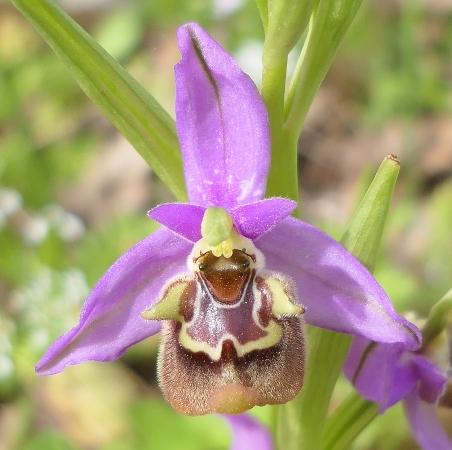News
It is orchid season now around Kaş
30th Apr 2021

Well, it has been since February, but early April is perhaps the best time to search for them here. The variety is impressive. We can’t quite compete with Crete or the Gargano for sheer number of species but within walking distance of the house there’s twenty species. And more down by the coast and in the mountains.
When we fenced our land we fondly thought that we’d be doing the flora a favour preventing the roving flocks of goats and sheep and even the cattle from munching everything to the ground. The first year we watched proudly as our land was swathed in flowers. But then so was the surrounding land with its goats and sheep. Now another year on and we see that the land outside the fence is covered in blooms, with impressive variety, whilst inside we are starting to notice less in flower and more grass! Last year some land next to us was also fenced. It was very dry rocky land but had a fine display of Ophrys lyciensis and the endemic Ophrys lycia on it. We thought that the orchids would benefit from the exclusion of grazing, but far from it. In fact very few came up this year as the sward around them thickened, whilst outside the fence, in a spot where a large herd of sheep graze twice daily, another population of Ophrys lycia flourished. Watching them closely we saw that some were nibbled but even as fifty sheep wandered past they didn’t damage so many. We’re not about to invite the goats and sheep inside the fence but it certainly makes you think.
There’s a lull in bird migration at the moment. The Woodchats and Masked Shrikes have arrived but there’s little passing through, though today there were a number of Barred Warblers galumphing through the Pears. A few rather more gentile Lesser Whitethroats too. A couple of weeks back though there were migrants aplenty with Subalpine, Rüppell’s, Eastern Orphean and Wood Warblers around the garden with Ortolan Buntings and Whinchats. Black-eared and Northern Wheatears were joined by one or two Isabelline Wheatears and a Cyprus Wheatear. This species regularly overshoots the island to Southern Turkey in the spring. You wonder where they all go then. We’re waiting now for the second wave – the bee-eaters and orioles must arrive soon!
A very cool March and first half of April has now passed into warm weather and the butterflies (and other insects) are coming out with it. False Apollos have already just about finished at this altitude but there’s plenty of Eastern Festoons on the wing. Both these butterflies feed on birthworts. The super-large Aristolochia adalica blooms lurk everywhere and we’ve found two much smaller species this spring, Aristolochia parviflora (it really is small!) and Aristolochia auricularia Green-underside Blues, Green Hairstreaks and Queen of Spain Fritillaries are all now flying.
You’ll see an image of an oval yellow ‘thing’. I’ve absolutely no idea what it is so if anyone can tell me would loove to hear?
And the camel? Not sure what that was doing there!













